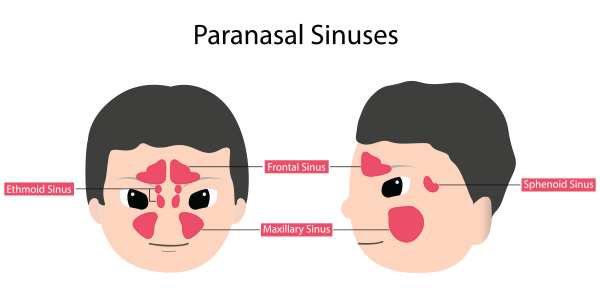
In children, what is the typical paranasal sinus development progression?
According to a 2013 American Academy of Pediatrics clinical practice guideline for the diagnosis and management of acute bacterial sinusitis, diagnosis of acute bacterial sinusitis should occur after a child has one of the following: 1) upper respiratory infection symptoms for 10 days without improvement, 2) a worsening course (usually with nasal discharge) after a period of prior improvement, or 3) the severe onset of fever—defined as ≥39º C for three days—with purulent nasal discharge.1 The diagnosis of sinusitis, though, requires the actual anatomical presence of a relevant sinus, too. What is the typical developmental progression of pediatric paranasal sinuses?
Explore This Issue
ACEP Now: Vol 40 – No 02 – February 2021A 2003 retrospective study by Shah et al evaluated 91 pediatric CT scans from 66 children ages 0–12 years.2 The authors used predefined measurement endpoints and radiological clinical experience to give these age groups developmental scores. The predetermined age groups were 0–3 months (n=9), 3–12 months (n=12), 1–3 years (n=12), 3–5 years (n=18), 5–8 years (n=26), and 8–12 years (n=14).
Consistent with other studies, all the paranasal sinuses were present at birth, but most were undeveloped. At birth, the sinuses—from largest to smallest—are ethmoid, maxillary, sphenoid, and frontal. Pneumatization (ie, development) of the maxillary sinuses begins to significantly occur in the 3–5-year range, which is also when the frontal sinus significantly begins to develop. In general, the order of significant development of the paranasal sinuses progresses from ethmoid to sphenoid and maxillary and then frontal. The sinuses we typically associate with acute sinusitis—the maxillary and frontal sinuses—are typically the last to begin significantly developing.
A separate retrospective magnetic resonance imaging–based study by Adibelli et al found similar results regarding the order of paranasal sinus development.3 They evaluated 1,452 children ages 0–18 years and assessed age-specific dimensions of each of the sinuses. Unlike the CT study by Shah et al above, these authors did not appreciate any frontal sinus pneumatization prior to age 5 years. All children developed pneumatization of the frontal sinuses by age 10 years—so this study found frontal sinuses that developed even later. Maxillary sinuses seemed to develop relatively similarly to the study by Shah et al.
Conclusion
The pediatric paranasal sinuses appear to develop in the following order: ethmoid, sphenoid/maxillary, then frontal. While they are all simultaneously enlarging, the maxillary sinuses significantly begin to develop around 3–5 years of age and the frontal sinuses are the last to significantly develop—closer to about 5 years of age. Diagnosing of acute bacterial sinusitis should take these anatomical age correlates into account.
References
- Wald ER, Applegate KE, Bordley C, et al. Clinical practice guideline for the diagnosis and management of acute bacterial sinusitis in children aged 1 to 18 years. Pediatrics. 2013;132(1):e262-280.
- Shah RK, Dhingra JK, Carter BL, et al. Paranasal sinus development: a radiographic study. Laryngoscope. 2003;113(2):205-209.
- Adibelli ZH, Songu M, Adibelli H. Paranasal sinus development in children: a magnetic resonance imaging analysis. Am J Rhinol Allergy. 2011;25(1):30-35.
Pages: 1 2 | Multi-Page







No Responses to “Know When the Paranasal Sinuses Typically Develop in Kids”